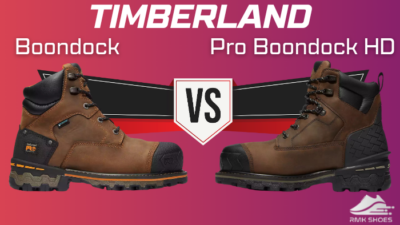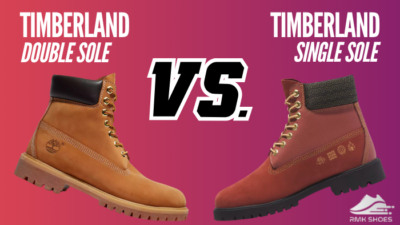Previously, we used one shoe for various purposes. But, as days pass, shoe brands release footgear for specific activities such as running, hiking, racing, etc.
Nike, the top shoe brand, has two popular shoe series: Nike Vapormax and Nike Vaporfly.
Though the series share a similar type name, the features like design, construction, cushioning, breathability, durability, soles, etc., have several changes.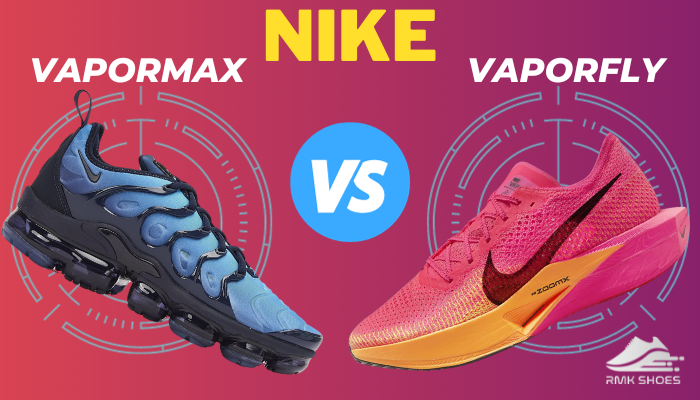
I will compare the Nike Vapormax and Vaporfly to help you understand the significant differences.
Let’s dive in.
Overview of Nike Air VaporMax and Nike Vaporfly
Nike Air VaporMax and Nike Vaporfly are two famous running shoes. While VaporMax is recognized for its futuristic design and cushioning technology, Vaporfly stands out with its performance-enhancing features.
Nike introduced the VaporMax series in 2017, where the air itself became the midsole. The shoe features a unique sole unit that ditches the usual midsole foam.
So, what does it have?
The shoe has air-filled pods that provide feather-light comfort and responsiveness. It was a revolution in cushioning and a perfect companion for casual runs & urban adventures.
Nike’s latest addition to the VaporMax series is Nike Air VaporMax Plus and Nike Air VaporMax 2023 Flyknit.
Conversely, Nike initiated Project Breaking2, just a year earlier to crack the two-hour marathon barrier. As a result, Vaporfly debuted in 2016.
The lightweight design, carbon fiber plate, ZoomX foam, and responsive cushioning help the athletes level up their performance.
And in pursuit of perfection, Nike released Vaporfly 3 in 2023.
Attribute Comparison of the Nike Vaporfly and VaporMax
Though VaporMax and Vaporfly come from the same brand, they differ in some features. A highlighted comparison table can give a glimpse of that.
Following is the comparison table of Nike Vaporfly and VaporMax:
| Attributes | Nike VaporMax | Nike Vaporfly |
|---|---|---|
| Primary Usage | Running, Casual | Racing |
| Upper Material | Flyknit or other materials | Vaporweave or Flyknit |
| Midsole Technology | Visible Air units | ZoomX foam with a carbon fiber plate |
| Outsole | Durable rubber with Air units | Full-length rubber for traction |
| Pull tab | Yes | Lacks from ZoomX Next% model |
| Tongue | Padded | Thin |
| Support | Responsive with air cushioning | Prioritizes energy return and forward propulsion |
| Cushioning | Soft | Responsive |
| Heel-to-Toe Drop | ~10mm | ~8mm |
| Weight (Approx.) | ~9.2 ounces | ~6.7 ounces |
| Price | Around $180-$220 | Slightly higher than VaporMax |
| Popularity | Popular for both running and everyday wear | Popular among elite and marathon runners |
Now, move into the in-depth comparisons.
Key Differences Between Nike VaporMax and Nike Vaporfly
While both VaporMax and Vaporfly bear the Nike swoosh with the latest technologies, they come at the road in different manners. To find your perfect foot companion, understanding the differences is necessary.
Here are the key differences between Nike VaporMax and Vaporfly:
1. Design and Construction
The Nike Air VaporMax looks elegant and modern in design.
You can easily recognize these shoes with their sole unit. The visible air units are embedded in the sole. It’s like walking on futuristic glass bubbles.
Ditching the traditional foam in the midsole makes the shoe feel lightweight. You will experience a natural and responsive feel for the design.
The shoe features a Flyknit or synthetic upper, which is breathable.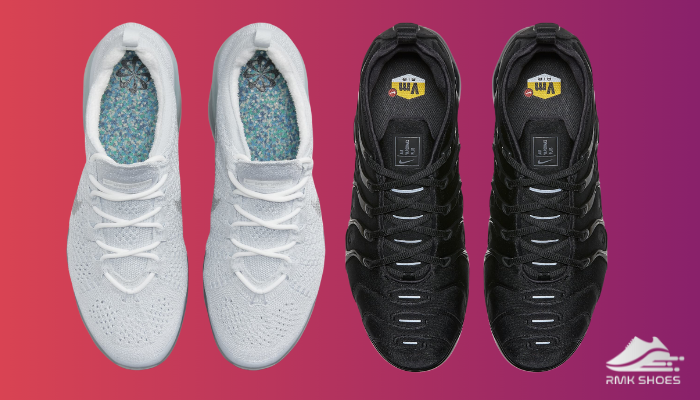
The sock-like snug fit gives a comfy feel. The unique design is visually appealing and great for daily wear and running.
On the other hand, Nike Vaporfly is performance-focused and embraces a minimal design compared to VaporMax.
The thin upper reduced the shoe weight at a notable value. The breathable mesh ensures airflow to keep the foot cool and focus on the race.
Moreover, the ZoomX foam in the midsole is excellent for energy-returning.
While the durable rubber outsole provides excellent grip and traction with its unique patterned design, the secure fit prevents slippage from tackling any terrain confidently.
On top of that, if you compare Vaporfly 3 vs Vaporfly 2, you will find that they all come with carbon fiber plates within the midsole.
All these constructions help to maintain the pace for longer miles.
It’s like the construction is whispering “speed” each step you take.
2. Cushioning and Responsiveness
When it comes to cushioning and response, VaporMax shows its creative spirit.
The air-filled pods replaced the traditional foam.
It absorbs impact and delivers a plush cushioning experience. The bouncy response enhances the overall comfort.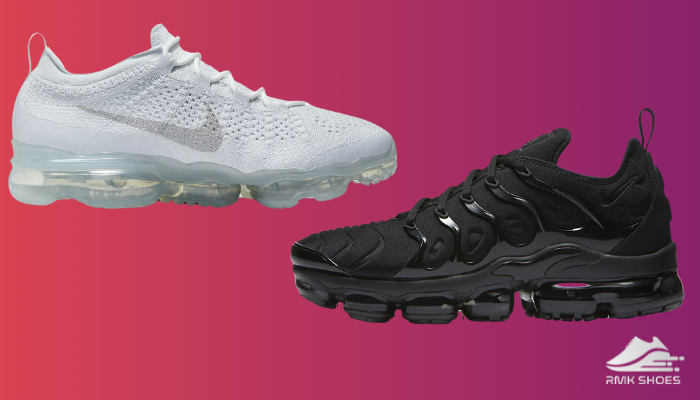
If you are seeking a cushioned shoe that provides an efficient pace, VaporMax’s unmatched comfort makes it an ideal choice.
In contrast, Nike’s proprietary ZoomX foam is the secret weapon of the Vaporfly.
The foam and carbon fiber plate combination delivers excellent cushioning and energy return. The spring-like effect helps to propel you forward.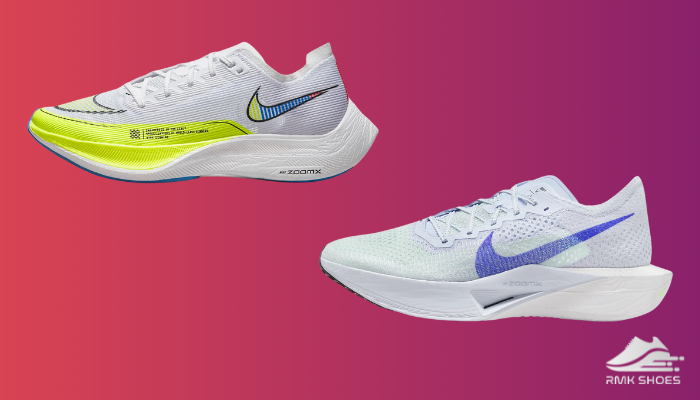
In addition, the shoe’s responsiveness helps you to endure the pace and efficiency of long-distance races.
3. Breathability and Comfort
Regarding breathability, VaporMax’s Flyknit uppers do an excellent job.
The unique weaving maximizes airflow and keeps the feet dry and cool on summer days. The air units also play a role in keeping away the feet from feeling suffocating.
But, Are VaporMax good for the gym in terms of comfortability?
The VaporMax’s high heel, congested toe box, or midsole is unsatisfactory for gym or intense workouts. But that brings the question, are VaporMax good for running for these?
The lightweight, supportive design, sturdy traction, etc, make it perfect for casual runs and everyday wear.
On the contrary, the Nike Vaporfly is also great when it comes to breathability because of its engineered breathable mesh upper.
The upper allows ample airflow and provides a snug fit without annoying discomfort.
Though most of their tongue is not padded like VaporMax, they don’t interfere with the lacing system. The pressure on the midfoot section also doesn’t hurt.
But overall, it offers a firmer feel compared to the VaporMax due to the reduced cushioning for carbon plates.
4. Traction and Durability
The outsole is where VaporMax and Vaporfly differ most.
The VaporMax’s durable construction can withstand the rigors of regular running. The durable rubber is great for traction on various surfaces.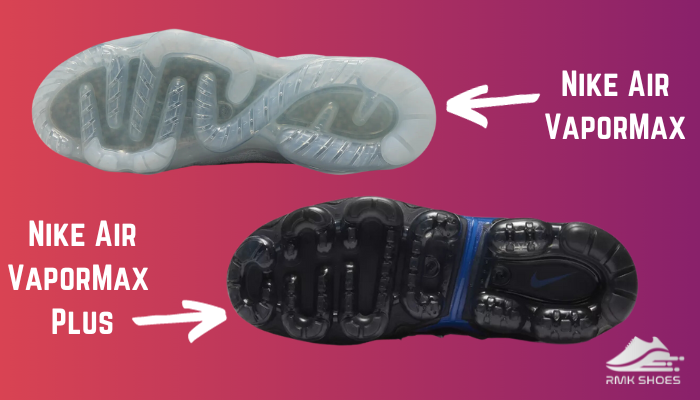
However, if used on rough surfaces, the exposed air pods can become a concern for wear and tear over time. But you are getting a unique styled futuristic aesthetic with the cost of it.
Conversely, Vaporfly Next% shoes’ rubber outsoles don’t disappoint either. They also offer good traction for racing speeds while still maintaining lightweight.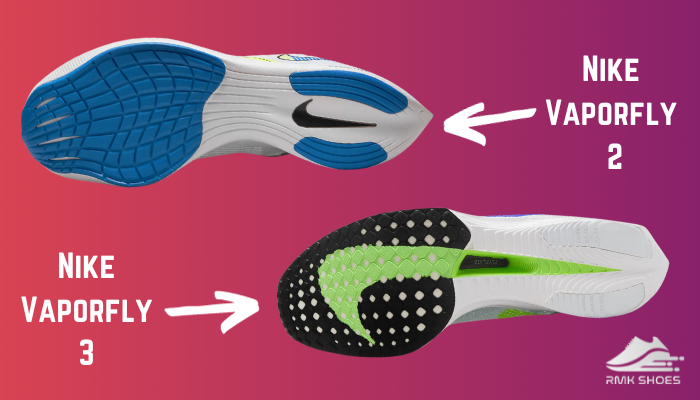
The newer models are excellent for optimal grip and longevity, and Nike is trying to improve those even more.
5. Pricing and Value
Since its debut, VaporMax has come with various models and colors at different price points.
Whether you are a casual jogger or fashion enthusiast, VaporMax covers your needs and style. The VaporMax shoes usually cost around $180-$220.
On the other hand, Vaporfly comes at a slightly higher price point than VaporMax for its performance-enhancing features. The latest Vaporfly 3 will cost you up to $260.
At this point, do you ever wonder why Nike is so expensive?
The technology and performance they offer are so good that some Vaporfly prototypes got banned in marathons.
So, if you think about that, the high price is justifiable.
As both shoes are great in their uniqueness and offer top-notch performance, the value they offer is totally worth it.
Pros & Cons of Nike VaporMax and Nike Vaporfly
When you are running, shoes are not just footwear. It helps you beat your personal bests. Whereas Nike VaporMax is the air-cushioned comfort king, Vaporfly acts as a racing rocket.
Learning their advantages and potential drawbacks can help you know which will be best for you.
Here are the pros and cons of Nike VaporMax and Vaporfly:
Nike Vapormax
- »Innovative soft cushioning and excellent comfort.
- »Futuristic and modern aesthetics.
- »Versatile for style and comfort.
- »Air units hold up well.
- »Most come with a breathable upper.
- »Slightly cheaper than Vaporfly.
- »Heavier than most Vaporfly.
- »Slightly higher heel-to-toe drop.
- »Lacks explosive energy return.
Nike Vaporfly
- »Features responsive ZoomX foam and a carbon fiber plate.
- »Very lightweight design.
- »Lower heel-to-toe drop enhances efficiency.
- »Emphasizes energy return.
- »Allow racers to maintain higher speeds with less effort.
- »Excellent traction on various surfaces.
- »Not budget-friendly.
- »Durability is below average for everyday casual runs.
- »Can feel discomfort for longer distances.
Which to Choose: Nike VaporMax or Vaporfly?
When choosing between these two unique series, you have to ask yourself what you need.
The Nike Air VaporMax Plus or VaporMax Flyknit features impressive cushioning and comfort. Though the weight is higher than the Vaporfly shoes, their unique design gives an extra edge.
Vaporfly is evolving, and with the latest Vaporfly 3, you can achieve peak performance and boost your confidence.
The latest technology it offers, with the feather-light weight, is really impressive and a better investment for the comfort, durability, and style that Nike is renowned for.
I prefer the Nike Vaporfly 3 for its amazing features and value over the Air VaporMax 2023.
But if you want to show off your shoes with a unique style, Nike Air VaporMax Plus can also do that.
FAQs
What are the differences between Nike Alphafly & Vaporfly?
Nike Alphafly usually features an Atomknit upper, Nike ZoomX AirPods, narrow midfoot, and comparatively heavy and more expensive than Vaporfly shoes. Nike Vaporfly, on the other side, comes with Flyknit and Vaporwave upper, wider toe area, lightweight and cheaper than Alphafly.
How much mileage can you run with Nike VaporMax or Vaporfly?
The Nike VaporMax uses hard Urethane outsole lugs. If you don’t puncture the bubbly Airbag,
The shoe can cover around 350-400 miles. Vaporfly’s ZoomX midsole is crease-prone, and visible sidewall scuffing appears after ~100 miles. If you use a midfoot striking pattern, it can last up to 400 miles.

